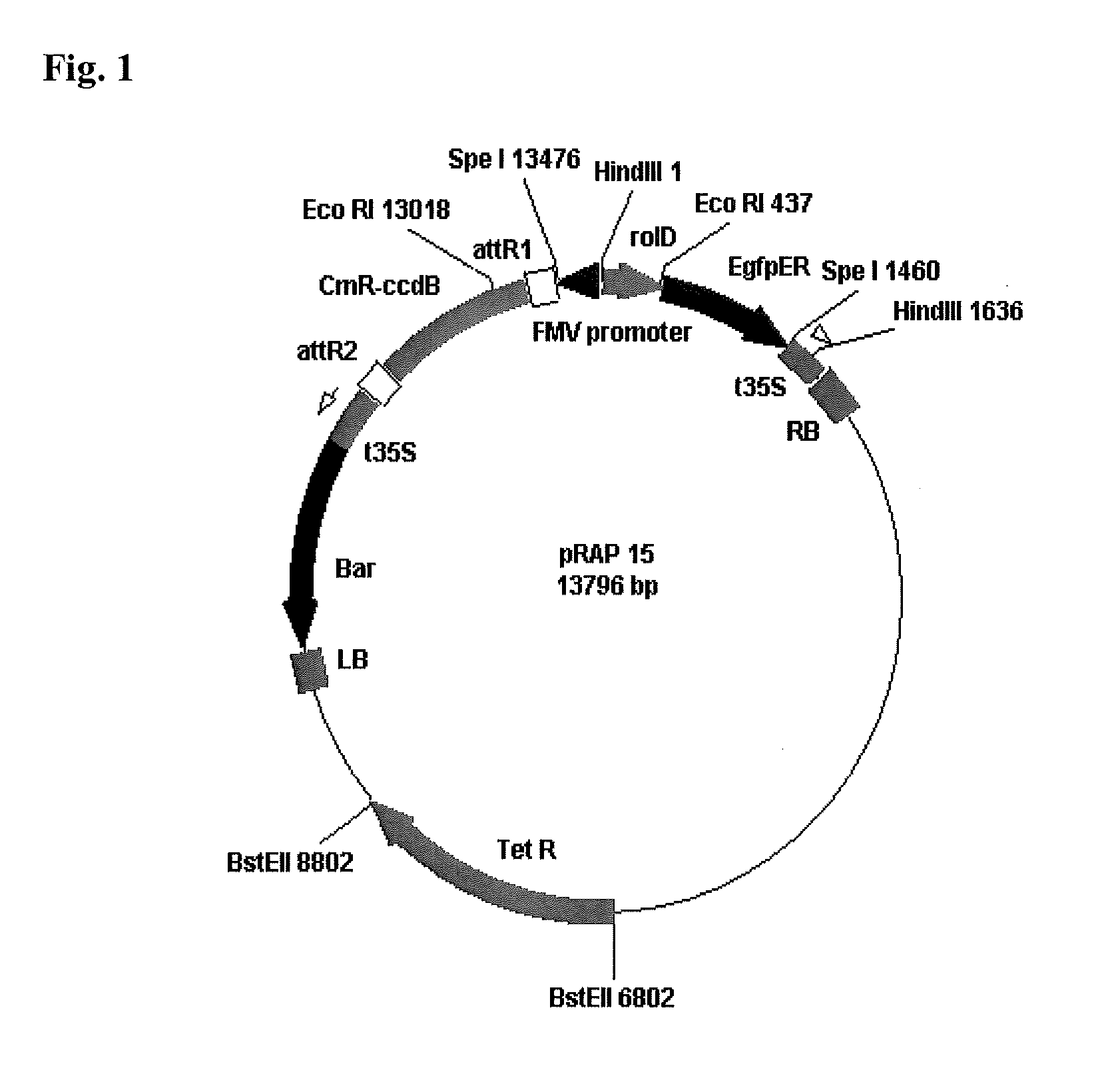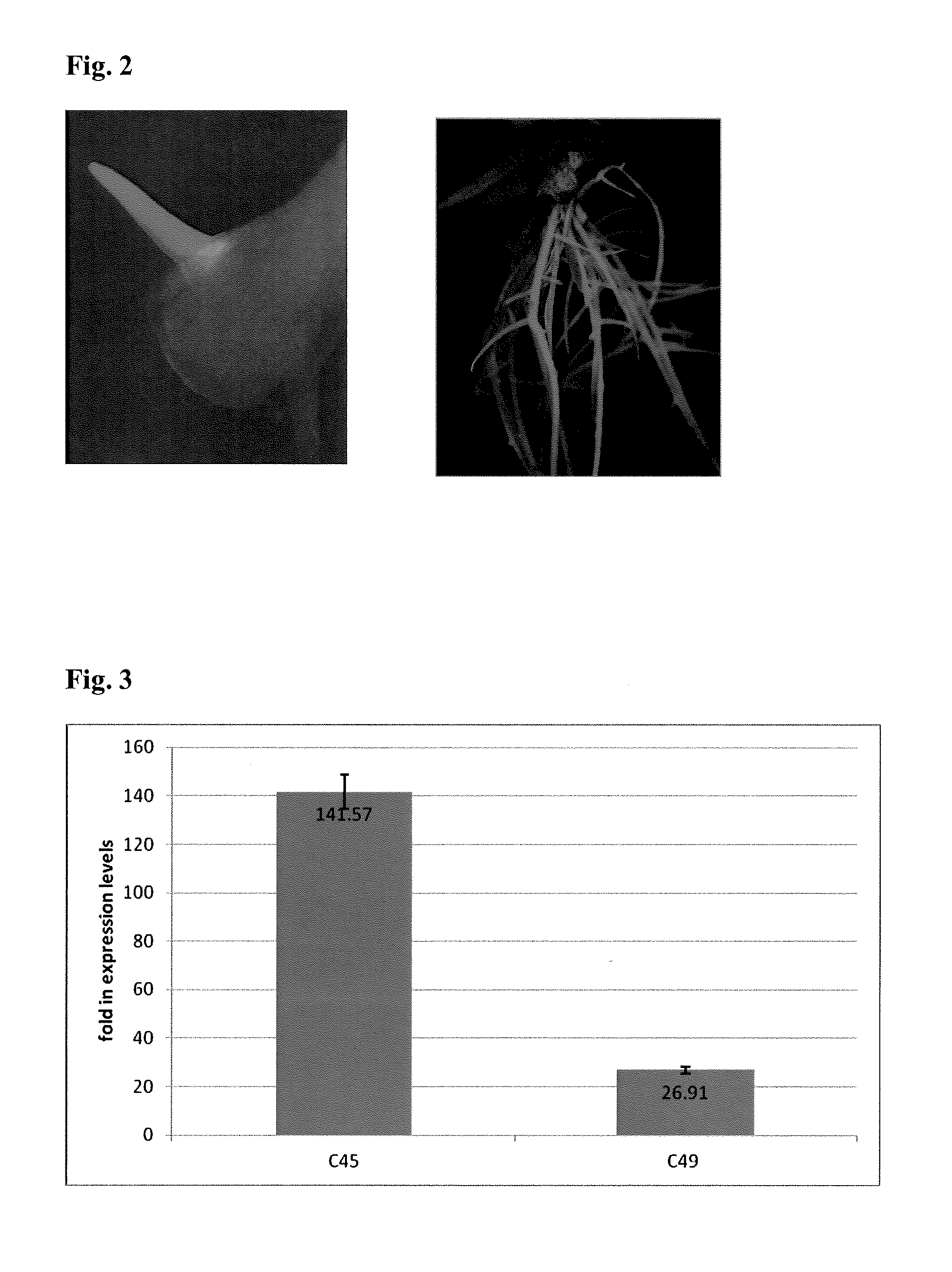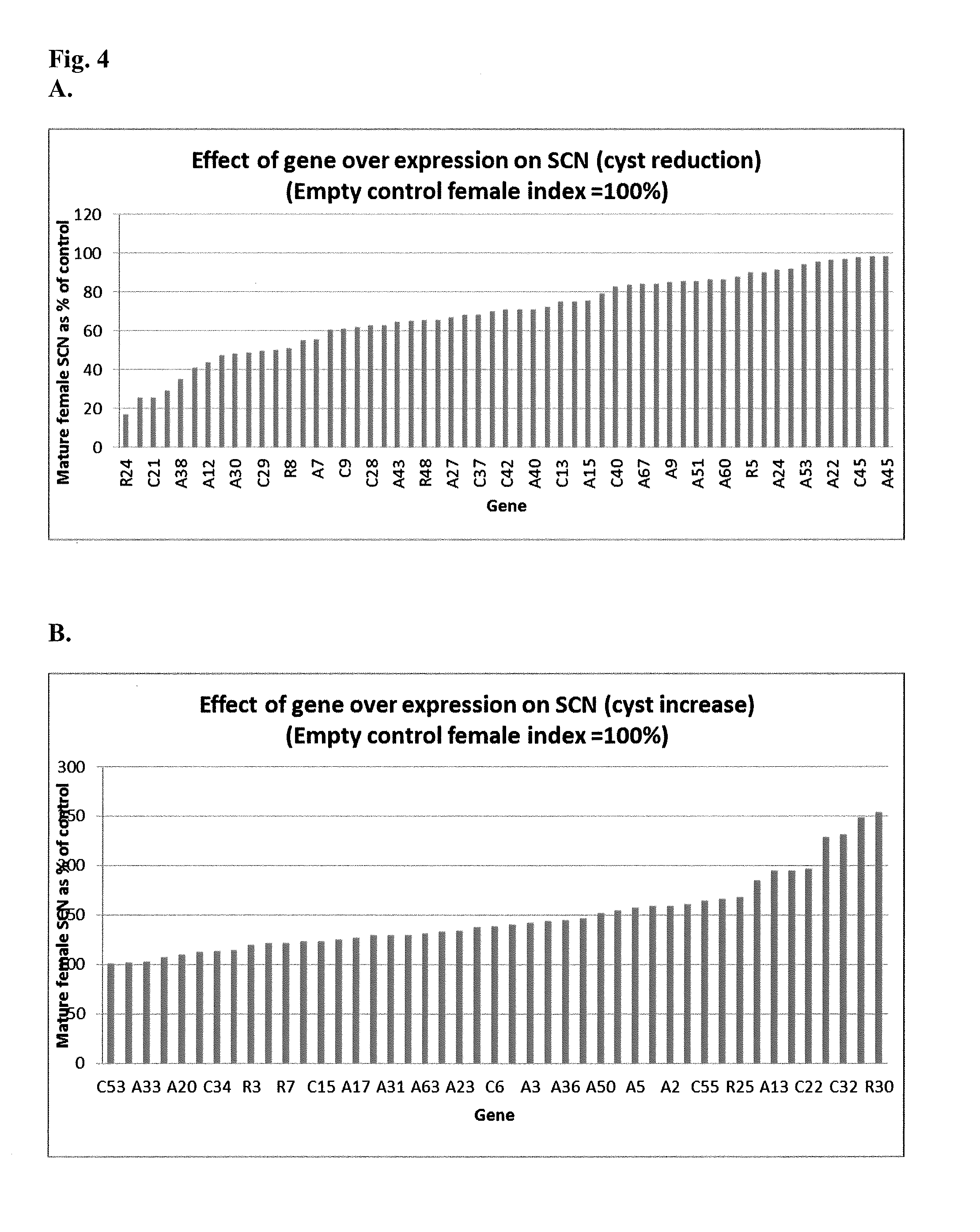Methods for Increasing Resistance to Soybean Cyst Nematode in Soybean Plants
a technology of soybean plant and nematode, which is applied in the field of increasing the resistance of soybean plant cells to the soybean cyst nematode, can solve the problems of inability to eradicate nematode infection in plants using known methods, inability to use efficient and effective approaches, and inability to achieve effective control of nematode infection in plants. , to achieve the effect of increasing the resistance of a soybean plant cell
- Summary
- Abstract
- Description
- Claims
- Application Information
AI Technical Summary
Benefits of technology
Problems solved by technology
Method used
Image
Examples
example 1
[0145]Genes were selected from published gene expression studies of the interaction of soybean roots with SCN over time using the Affymetrix microarray platform (Klink et al. (2007) Planta 226: 1389-1409; Klink et al. (2007) Planta 226: 1423-1447; Klink et al. (2009) Plant Molecular Biology 71:525-567; Klink et al. (2009) Plant Physiol. 151:1017-1022) and Ithal et al. (Molec Plant Path Interact 20:293-305 (2007)). The GenBank number associated with the gene expression data was used to obtain full length open reading frames of the genes either by building contigs from expressed sequence tags (ESTs) found in GenBank or by blasting the DNA or predicted protein sequence against soybean genome database found at Phytozome.net (Joint Genome Institute, U.S.D.O.E.; Center for Integrative Genomics, U.C. Berkeley). Primers for PCR amplification of the open reading frame were designed using Primer 3 (biotools.umassmed.edu / bioapps / primer3_www.cgi; See, Table 1) and OligoAnalyzer 3....
example 2
Amplification and Cloning of Open Reading Frames (ORFs)
[0146]The ORFs of target genes were cloned using the Gateway® (Invitrogen, Carlsbad, Calif.) system. ORFs were amplified from template cDNA using cDNA libraries previously reported (Heinz et al. 1998; Khan et al. 2004), representing RNA from the SCN-resistant soybean cultivar ‘Peking’ 3 days after infection (dai) with SCN NH1-RHp (also known as race 3). The Heinz UniZap Library was made from roots and shoots of resistant soybean cultivar Glycine max ‘Peking’ 2-3 dai with SCN race 3. The Khan TriplExZ library was made from roots only of the resistant soybean cultivar Glycine max ‘Peking’ 2-4 dai with SCN race 3. ORFs were amplified using gene-specific primers containing CACC at the 5′end of the forward primer, which is necessary for directional cloning using the Gateway® (Invitrogen) system. The 50-μL PCR reaction used 2 μL of cDNA library template and 1 unit of Platinum® Taq Polymerase High Fidelity (Invitrogen) according to the...
example 3
Formation of Composite Soybean Plants
[0148]A. rhizogenes clones containing the genes of interest were grown as described previously (Ibrahim et al. BMC Genomics 12:220 (2011), www.biomedcentral.com / 1471-2164 / 12 / 220). Briefly, clones were grown individually in 5 ml Terrific Broth (Research Products International Corp., Mt. Prospect, Ill.) medium containing 5 ug / ml tetracycline on a rotary shaker at 250 rpm at 23-25 C. Cells were collected by centrifugation at 5000 rpm for 30 min at 4 C and resuspended in Murashige and Skoog medium (Murashige and Skoog (1962) Physiol Plant. 15, 473-497) as described by Klink et al (Plant Physiol. 151:1017-1022 (2009)) for root transformation. Cells containing pRAP15 with no gene of interest was grown to transform roots serving as controls.
[0149]Composite plants were prepared as described previously (Klink et al. Plant Physiol. 151:1017-1022 (2009)), as modified by Ibrahim et al. (BMC Genomics 12:220 (2011), www.biomedcentral.com / 1471-2164 / 12 / 220). Bri...
PUM
| Property | Measurement | Unit |
|---|---|---|
| Tm | aaaaa | aaaaa |
| temperature | aaaaa | aaaaa |
| pH | aaaaa | aaaaa |
Abstract
Description
Claims
Application Information
 Login to View More
Login to View More - R&D
- Intellectual Property
- Life Sciences
- Materials
- Tech Scout
- Unparalleled Data Quality
- Higher Quality Content
- 60% Fewer Hallucinations
Browse by: Latest US Patents, China's latest patents, Technical Efficacy Thesaurus, Application Domain, Technology Topic, Popular Technical Reports.
© 2025 PatSnap. All rights reserved.Legal|Privacy policy|Modern Slavery Act Transparency Statement|Sitemap|About US| Contact US: help@patsnap.com



